STRATEGIC PLAN



















Rebounding out of the pandemic, the Charlotte Symphony has a bold new vision to better serve the diverse communities of Charlotte-Mecklenburg and beyond.
Through an eight-month planning process involving the Charlotte Symphony Board of Directors, administrative staff, musicians, volunteers, and others, the Charlotte Symphony has developed this Strategic Plan — which focuses on seven essential areas of strategic focus — to serve as a road map for our future, pointing us towards a Charlotte Symphony that is enterprising and resilient. Each year the CSO will reevaluate its progress and set goals to bring us closer to our vision. Progress updates will be published regularly.
Artistic vitality and growth will be evident in all that we do, from neighborhood concerts in public spaces to our flagship series Uptown; newcomers to Charlotte, hearing about the CSO and our musicians from enthusiastic neighbors, will see great performances on stage that reflect their new community; and we aspire, through our preeminent regional role, to be attracting national recognition and generating civic pride.
The CSO will be regarded as a regional leader in exceptional music enrichment and learning, through innovative programming that is accessible and valuable to all.
The CSO will be on such a strong financial footing that there are no questions over its short- and longterm health.
Innovation will be embedded in every part of the organization, and the CSO will have developed a reputation as one of the most innovative arts and cultural organizations in the region, and one of the most innovative symphonies of our size in the country.
The CSO will be known as an innovative, united, and diverse organization that reflects the community, embodying its core values, and recognizing and celebrating its employees as individuals while also emphasizing teamwork to accomplish its mission.
The Symphony will be relevant to its community and viewed as an integral and irreplaceable part of the artistic landscape of Charlotte by virtue of its excellent musical experiences, intentional cultural partnerships, deep community focus, and dedication to educating and engaging all generations of musicians and music lovers.
The Symphony will be well-known for “meeting people where they are,” our geographic reach will be greater, utilizing all media to extend our performing and educational impact beyond the immediate region, and, by programming and presenting the CSO with intentionality, we will have grown our audiences in every demographic segment, with special focus on breaking down barriers for those in currently underrepresented communities.

We stand here now at a moment of extraordinary opportunity. Charlotte is home to a diverse and growing population who deeply values the city’s arts and culture scene. As our community continues to grow and change, so too must the Charlotte Symphony. As we celebrate more than 90 years of remarkable music-making and the many contributions of former Music Director Christopher Warren-Green throughout his tenure, we look forward to a future brimming with potential as we welcome Kwamé Ryan as the Symphony’s 12th Music Director in the 2024–25 season.
It is with a spirit of hope and gratitude that we share this plan with you — our vision for what the Charlotte Symphony will be in 2025.




The Charlotte Symphony uplifts, entertains, and educates the diverse communities of Charlotte-Mecklenburg and beyond through exceptional musical experiences.
We uphold the highest artistic integrity and strive to meet or exceed the expectations of our audiences and our community in every interaction.
We foster a culture of warmth and belonging that draws the best from our employees and creates an inclusive space for our community; where everyone is accepted, valued, and treated with empathy, dignity, and respect.
With drive and commitment, we fearlessly embrace new ideas and continuous learning. We seek opportunities for growth to build momentum and meet challenges with bold creativity in order to evolve and thrive.
Reaching out through the transformative power of live music, the Charlotte Symphony will be a civic leader, reflecting and uniting our region.
We employ music as a tool to forge meaningful connections and strive to meet our community’s needs through inspiring musical experiences and educational opportunities that are relevant and accessible to all.
As a symphony, we recognize and value that we are strongest when we work together as a team. With a cooperative spirit, we aim to harness the collective knowledge and power of our community through partnerships that advance shared goals.
We honor and preserve the trust of our audience, colleagues, and the community as a whole by acting with honesty, integrity, and thoughtfulness.
Artistic Vitality & Growth
Learning
Financial Health & Sustainability
Innovation
Organizational Culture
Public Relevance
Audience Development
Strategies to advance our commitment to Diversity, Equity, and Inclusion (DEI) are incorporated within each area.
The Charlotte Symphony Orchestra is on a learning journey.
Music has the power to be a unifying force, bridging differences and bringing us together in the shared enjoyment of its beauty and emotion. In this way, The Charlotte Symphony aspires to be a civic leader but can only do so if we actively reflect our region and make sustained structural changes that embed diversity, equity, and inclusion in all we do.
We recognize the systems of inequity that have permeated American orchestras over many decades, as they have our society as a whole. These systems have created an environment where only some have felt welcome to enjoy and participate in symphonic music. Others have felt uncomfortable and excluded or encountered outright barriers to participation.
We, along with other orchestras throughout the country, share in the consequences. We are an orchestra that does not yet truly reflect the full and rich diversity of the communities of Charlotte-Mecklenburg: in who we are as an organization, in who we are onstage, and in what we do to be inclusive and welcoming to all.
We acknowledge that overcoming these systems of inequity and realizing our vision will require education, actively seeking input from the many communities in our region, a listening ear, and honest self-evaluation in order to implement lasting change.
We have begun this work and commit to sustaining it through the seven areas of focus in our Strategic Plan, which follows. As you read through it, you will find specific strategies and steps we will take to advance diversity, equity, and inclusion by addressing:
• Internal Culture
• Community Engagement
• Accessibility
• Recruitment and Retention
• Internal Education
• Internal and External Communication
• The Audience Experience
• Personal and Organizational Accountability
In addition, we will challenge ourselves to explore new ways of thinking as we do our work by continually asking:
We will have in place a process and tools to internally monitor our progress. However, a critical measure of our success will be how we are perceived by our communities. To be publicly accountable and to encourage dialogue, scan the QR code at the right, or click here to view periodic updates on the work underway and to give us feedback:
charlottesymphony.org/strategic-plan/deireport

Goal, by 2025: we intend for the CSO’s artistic vitality and growth to be evident in all that we do, from neighborhood concerts in public spaces to our flagship series Uptown; we want newcomers to Charlotte, hearing about the CSO and our musicians from enthusiastic neighbors, to see great performances on stage that reflect their new community; and we aspire, through our preeminent regional role, to be attracting national recognition and generating civic pride.
1. Use the CSO’s 90th Anniversary Season in 2021-22 as the banner to celebrate the artistic vitality and growth of the CSO through Christopher Warren-Green’s 12-year tenure as Music Director, pivoting to a continuing, fruitful relationship beyond 2022, as our Conductor Laureate and Music Adviser, leading special projects devised with him (e.g., student composition workshops with NC and SC universities).
2. Use the search for a new Music Director — applauding the diversity of talent and programming that is part of the process — as an opportunity to generate energy and excitement in the CSO’s future, and their appointment in or around 2024 as another milestone in building shared ownership and civic pride in the institution.
3. Empower the musicians’ Artistic Advisory Committee to act as a partner with the CSO’s management team in artistic planning, in such areas of artistic concern as venue selection, scheduling, repertoire choices, and the engagement of guest conductors and soloists, as well as in assessing the quality of our recordings.
4. Work with the Conductor Laureate/Music Adviser, Resident Conductor, and Artistic Committee on plans for new commissions, artists-in-residence, and new artistic collaborations through and beyond the transition to the new Music Director.
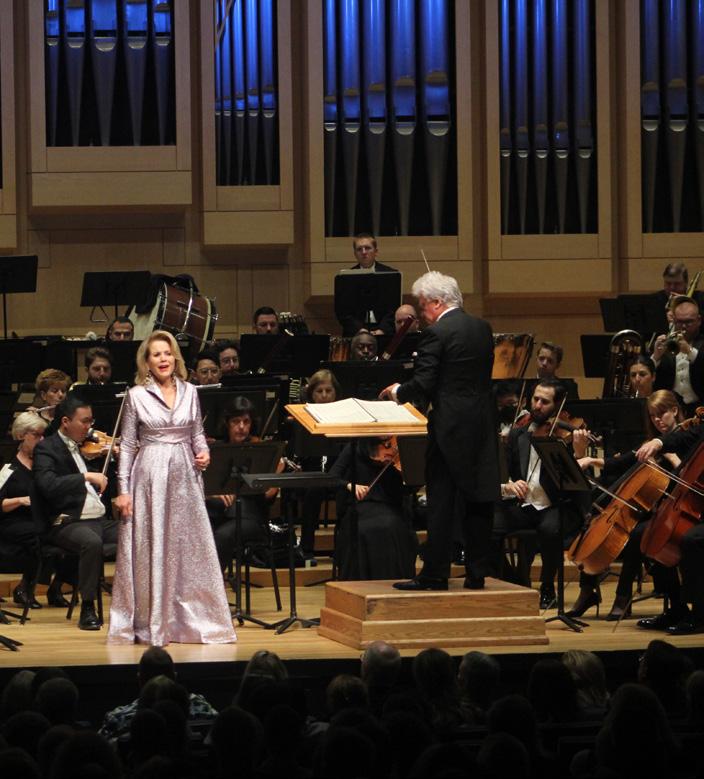


(continued)
5. Build our mutually-beneficial artistic relationships with key partners such as Charlotte Ballet, Opera Carolina, and the Charlotte Master Chorale, while leaving room for new initiatives and collaborations to emerge and flourish.
6. As part of the CSO’s strategic focus on public relevance and audience development, showcase our musicians as ambassadors in the community, and as resources to further the CSO’s artistic vitality and growth through their individual creativity as well as their collective contributions (e.g., by engaging our musicians as soloists; and by providing opportunities for musicians to curate new initiatives).
7. Continually assess and develop the CSO’s ability to attract, recruit and retain key talent, with increased access for those historically underrepresented, including but not limited to greater ethnic diversity; and ensure an inclusive and supportive working environment, one that enables our musicians to flourish, as part of our commitment to sustaining a healthy organizational culture that is welcoming to all.
8. Recognizing that artistic vitality can be demonstrated on a small scale as well as large stage, use CSO chamber ensembles to expand our presence and visibility in all the neighborhoods of Charlotte, through programming that is designed with community participation and each unique audience in mind.
9. In pursuit of artistic excellence and the creation of memorable large-scale performances, devote sufficient resources to presenting world-class artists and great symphonic music to our Charlotte audiences.


(continued next page)

STRATEGIES (continued)
10. In all areas of programming, celebrate the rich diversity of music while making emotional connections to the audiences we seek to serve.
11. Commission and present new projects designed to raise the CSO’s artistic profile on a national and international stage (e.g., performing and recording new works; through broadcasting and streaming; and by select appearances in venues outside Charlotte, such as The Kennedy Center).
12. Build the CSO’s Music Library, protecting and preserving current collections, including our recordings, developing a program to digitize assets, and creating a plan for devoting sufficient new resources to advance artistic vitality and growth.
13. Develop a multi-faceted plan for our use of performance venues, from the facilities of the Blumenthal Performing Arts Center to key partnerships with other concert halls and new performance spaces in Mecklenburg County and the wider region, including South Carolina, ensuring that the CSO has affordable, ready access to high-quality acoustic spaces and a secure home base for the long term.
14. As part of the negotiations for new Agreements with Local 342 of the American Federation of Musicians in 2022 and again in 2024, address together those aspects of collective bargaining that impact artistic vitality and growth, including:
• Musicians’ salaries, employment conditions, and overall compensation
• Recruitment, retention, and consistency of personnel
• Performance weeks and the healthy artistic balance of the season.

Goal, by 2025 : the CSO will be regarded as a regional leader in exceptional music enrichment and learning, through innovative programming that is accessible and valuable to all.

1. Continue to grow existing relationships with key partners (e.g., the Symphony Guild), and develop new partnerships throughout the Charlotte-Mecklenburg region.
2. Develop programming that creates a seamless continuum of experiences for learners of all ages (e.g., new pre-K initiatives; a third youth orchestra that builds a pathway for emerging area youth musicians — including Project Harmony graduates — to the Charlotte Symphony Youth Orchestra (CSYO) program; adult education; and CSO programs, e.g., sensory-friendly, for individuals with special needs).
3. Support the CSO’s commitment to DEI by featuring works by representative composers on CSYO and education concert programs; engaging guest artists and teachers reflective of our communities; and ensuring that programming is accessible and welcoming to participants of all backgrounds, e.g., especially: under-resourced students in Charlotte-Mecklenburg Schools.
4. Develop plans to allow for greater participation by CSO musicians in our Education and Community Engagement programs while also providing suitable opportunities for non-CSO artists to work with us.



(continued)
5. As part of our key partnership with Charlotte-Mecklenburg Schools, continue efforts to establish full grade level field trips ensuring all students have the opportunity to experience a CSO education concert.
6. As part of our strategic focus on audience development, expand the use of digital production and distribution to reach a wider audience for our education programs.
7. Increase access for college students to attend CSO workshops, rehearsals, and concerts, as an extension of their classrooms, while developing unique partnerships with each local university to address their specific needs and interests.
8. Build our fundraising capacity to ensure the long-term financial security of educational initiatives, allowing for growth in both depth and reach through increased stability and affordability of programming.
9. Implement communication plans intentionally around CSO education initiatives and tell our story to the community — raising public awareness, and increasing both participation and support.


Goal, by 2025: CSO will be on such a strong financial footing that there are no questions over its short- and long-term health.
1. Fine-tune all internal financial management processes and structures.
2. Move to a rolling three-year financial plan, incorporating project budgeting for all programs.
3. Incorporating goals and objectives from the other areas of strategic focus in this Plan, create a balance of programmatic activity that maximizes revenues, including new opportunities for diversification.
4. Support the CSO’s commitment to DEI by ensuring that income and expenses for DEI and organizational culture initiatives are included in each annual operating budget.
5. Finalize new collective bargaining agreements amicably with AFM Local 342, ahead of the respective deadlines of 8/31/22 and 8/31/24, to bring clarity and stability to fixed expense projections through 2025 and beyond.

6. Replace $2M annual THRIVE funding, starting in fall 2021, through a mix of additional earned revenue, enhanced corporate and foundation support, re-positioned local government contracts for services, fundraising events, and most significantly, a $50M campaign.
7. Complete the $50M campaign by 2025, to include $10M in short-term expendable strategic funding and $40M in additional endowment support, plus legacy commitments.
8. Monitor management of the new and existing endowment assets, to keep the CSO endowment on course to exceed $50M by 2025.
9. Ensure healthy liquidity and financial stability by building operating cash reserves of $5M by 2025, to serve as a Fund for the Future: as working capital, ‘rainy day’ revenue replacement, R&D venture funds, and as a resource to guarantee a Line of Credit if needed.

Goal, by 2025: innovation will be embedded in every part of the organization, and the CSO will have developed a reputation as one of the most innovative arts and cultural organizations in the region, and one of the most innovative symphonies of our size in the country.
focusing equally on internal culture and external outputs:
Foster a culture of innovation by:
1. Creating an ‘innovation lab’, an ad hoc, multi-constituency standing group that meets monthly to provide a forum for voicing and exploring innovative and/or disruptive ideas, through continuing dialogue, including revisiting and reconsidering ideas that may have been tried before but which are thought worthy of reinvention.
2. Create clear internal mechanisms for ideas (or partial ideas) to be reviewed, in the interests of transparency, so that folks understand the criteria and methodology for approval.
3. Also, providing a mechanism for anonymous ideas to surface from anywhere in the organization, allowing individuals to find their own comfort level to make contributions.
4. Empowering staff and musicians with a sense of co-ownership of the CSO’s future, with CSO leadership providing ‘air cover’ for practicing innovation from the ground up, in how ideas are explored, tested and pursued.
5. Making excellent examples of good ideas in each year of the Plan, to show that action can happen, and ideas come to fruition; and celebrating success publicly as well as within the organization, whenever appropriate.




(continued)
Create innovative outputs and outcomes in all areas of activity, including, for example:
6. Internal communication systems and connections, founded on personal relationships.
7. Programming, commissioning, and concert presentation.
8. Digital media content, marketing, and distribution.
9. Education programming.
10. Our commitment to diversity, equity and inclusion in all that we do.
11. Audience development and fundraising.
12. External collaboration and partnerships.


Goal, by 2025: the CSO will be known as an innovative, united and diverse organization that reflects the community, embodying its core values, and recognizing and celebrating its employees as individuals while also emphasizing teamwork to accomplish its mission.

1. In year one of the Plan, conduct a thorough organization-wide process to identify, agree, and adopt our core values.
2. Nurture an internal culture of diversity, equity, and inclusion that supports, connects, and values all employees and volunteers of the organization.
3. Develop and support an internal communications process to break down silos, acknowledging that we have multiple work environments, and ensure that everyone in the organization knows each other personally, honoring each other’s roles and interconnectivity, in order to foster trust, mutual respect, and collaboration.
4. Excel in communication, being as transparent as possible, encouraging all employees to have access to key information and feel included in the work of the CSO.
5. Consciously practice and assess our adherence to the core values to ensure that they are apparent in practice, whether to newcomers or to long-serving members of the organization, and part of everyday work life.



(continued)
6. Foster a welcoming, progressive, and collaborative environment in which the organization encourages and listens to ideas from all employees, as it works towards achieving its mission and vision, attributing equal value to each employee’s input, regardless of position.
7. Provide accountability for both CSO as an organization as well as its leaders in demonstrating and sustaining our commitment to DEI.
8. Ensure that all leaders, employees and volunteers demonstrate an appropriate level of understanding and skill in DEI and anti-racist practice, achieved through continual internal education.
9. Continually evaluate and maintain a Human Resources structure that demonstrates a commitment to DEI in all practice areas, including recruiting and retention, on boarding and off boarding, staff performance reviews, and internal practices and policies, so that the CSO will be known as an employer of choice.
10. Develop and build an organizational identity and brand that encompasses the CSO’s mission, vision, values, and personality to reflect what is special about the CSO.
11. Hold ourselves open to external influences that can inform, guide, and enhance our organizational culture.
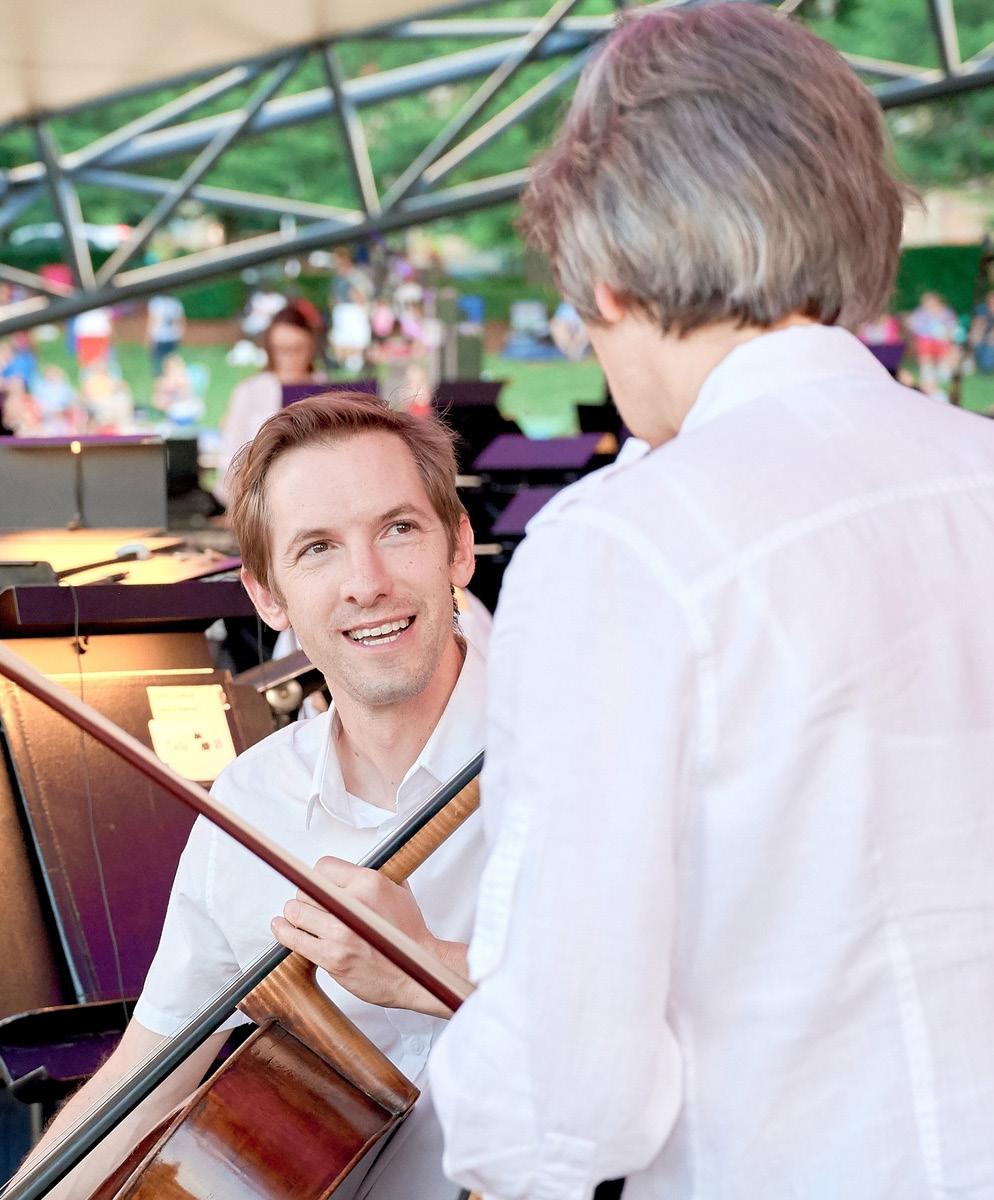

Goal, by 2025: the CSO will be viewed as an integral and irreplaceable part of the artistic landscape of Charlotte by virtue of its excellent musical experiences, intentional cultural partnerships, deep community focus, and dedication to educating and engaging all generations of musicians and music lovers.

1. Tell the story of the CSO in a way that connects the public to individual members of the Symphony family, so that they are recognized as positive contributors to community life, and helping to spread ‘word of mouth’ organically about our work.
2. Empower and encourage individual members of the Symphony family — musicians, staff, and volunteers — to show up as members of the CSO while participating in other organizations that promote support and promote civic life and community vitality (e.g., chambers of commerce, Rotary clubs, neighborhood associations, and other non-profits), so that the Symphony is seen as a leadership organization in our community.
3. Conduct institutional marketing and public relations campaigns that promote the CSO as a valuable asset to the City, the County, and the region, so that all our performances and programs are highly visible and well perceived.
4. Demonstrate adherence to the highest standards of non-profit governance, fiscal health, and organizational transparency, and so be viewed as a well-run, well-governed institution by local government, funders, and the media.
5. Share and promote our commitment to DEI in a way that informs and inspires both internal and external stakeholders, through communications that are appropriate and consistent with the CSO’s values and established guidelines.



(continued)
6. Pursue a consistent approach to community engagement that prioritizes authenticity, respect, intentional listening, reciprocity, true collaboration, and attention to power dynamics.
7. Build an authentic and diverse set of community partnerships that lead, among other benefits, to invitations to the CSO to participate in local festivals and civic events.
8. Ensure that children and their families have easy access to CSO performances and programs, including students participating in Project Harmony and our Youth Orchestras, and through our partnership with CMS and other local districts in both North and South Carolina, to help remove barriers to participation, and strengthen the CSO’s reputation as a welcoming organization.
9. As part of our strategic focus on audience development, build civic pride in the CSO at a grass-roots level, so that, for example, local community leaders, government officials, and individual donors all feel good to talk about “our CSO.”
10. Conduct regular public opinion surveys — of non-attendees as well as current attendees — to learn how we can continue to improve our service and perceived public relevance, and to track our progress from one year to the next.


Goal, by 2025: the CSO will be well-known for “meeting people where they are:” our geographic reach will be greater, utilizing all media to extend our performing and educational impact beyond the immediate region, and, by programming and presenting the CSO with intentionality, we will have grown our audiences in every demographic segment, with special focus on breaking down barriers for those in currently under-represented communities.
1. Work with the City of Charlotte, Charlotte-Mecklenburg Schools, neighborhood associations, places of worship, and other community partners, to deepen our physical presence in all parts of the City, building relationships that will help everyone know us well and feel welcome at CSO performances.
2. Develop a network of community ambassadors that will help introduce us to the neighborhoods in which they live, help us engage in conversation, and act as advocates for the CSO in welcoming their friends and neighbors to our programs.
3. Work with Mecklenburg County, including the Department of Park and Recreation, to develop the CSO’s presence in the City’s outdoor spaces, and in venues in the towns of Cornelius, Davidson, Huntersville, Matthews, Mint Hill, and Pineville, building on our current partnerships with local presenters, and with partners such as the Arts & Science Council through the Culture Blocks program that currently brings CSO musicians into libraries, recreation centers, parks, and other community spaces. Ensure that we also focus on attracting citizens from across Mecklenburg County to our performances Uptown.
4. Devise plans that expand the CSO’s presence beyond Mecklenburg County into surrounding counties, including those in South Carolina, working with local presenters and other partners, including recently opened venues, to add value to local arts & cultural programs and complement existing activity.



(continued)
5. Build on existing partnerships with WDAV, WFAE, and other local radio and TV stations, including those serving niche audiences, to expand the CSO’s broadcast presence.
6. Coming out of COVID, continue a select portfolio of streamed programming, designed for specific target audiences, that builds on what we have learned in maintaining an online presence for the CSO throughout the pandemic.
7. Complement our digital and broadcasting presence with a comprehensive set of marketing plans that include media serving unique and diverse audiences, to extend the footprint of general familiarity with the CSO and our performances, and underpin our commitment to attract and welcome new audiences.
8. Develop partnerships with Chambers of Commerce, Charlotte Center City Partners, Charlotte Regional Visitors Authority, Greater Charlotte Hospitality and Tourism Alliance, and other agencies that service and support cultural tourists, to welcome larger numbers of out-of-town guests to our performances.
9. Turn our website and social media platforms into more effective tools for engaging new and existing audiences with content that personalizes and enhances the concert experience.
10. Implement plans that enable us to build relationships with each key demographic segment (e.g., forming partnerships with young professional groups across Charlotte).
11. Take a data-driven approach to mapping progress in more effectively engaging our target audiences, and ensure that the evolution of our programming is informed by understanding our audiences’ needs and desires.
(continued next page)

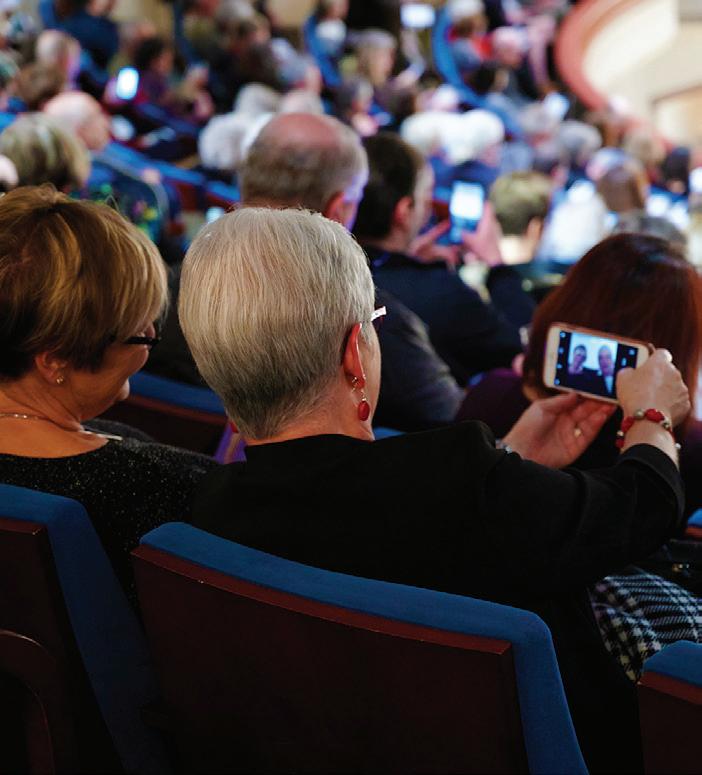

In an effort to bring exceptional musical experiences to the entire Charlotte-Mecklenburg community, the Charlotte Symphony strives to perform in venues around the region, not just in locations Uptown.
The map below illustrates the reach of the 11 venues that the CSO has performed in to date, two new venues that the CSO has already formed partnerships with to perform in the future, and six potential venues that we have targeted as next steps.
Out of respect for our colleagues in the industry, we are cognizant of the following orchestras in the region and the spaces they serve: Asheville Symphony, Greensboro Symphony Orchestra, Hendersonville Symphony, Rock Hill Symphony, Salisbury Symphony, Western Piedmont Symphony, and Winston-Salem Symphony.

For more details, view these maps online at
http://bit.ly/csoedmaps
The Charlotte Symphony prides itself on educational outreach. The map to the right shows the imprint of area schools that travel to see the CSO in its Uptown locations.

Represented here are the 9 counties the CSO reaches by taking performances directly into schools.

This map illustrates the reach the CSO has in performing at different community venues, including churches, recreation centers, breweries, and schools.

The Charlotte Symphony Orchestra (CSO) connects with more than 130,000 music lovers each year through its lively season of concerts, broadcasts, community events, and robust educational programs. In the 2024–25 season, Kwamé Ryan becomes the Symphony’s 12th Music Director succeeding Christopher Warren-Green, who remains Conductor Laureate. The CSO is grateful for Maestro WarrenGreen’s leadership over the 12 years that he and his wife have invested in the community, especially for students across Mecklenburg County by helping to establish and grow Project Harmony, hosted in four partnering locations across the City of Charlotte.
The Charlotte Symphony is governed by a Board of Directors of 26 community and business leaders, led by Chair Richard Krumdieck and Vice Chairs Ulrike Miles and Melinda Snyder. The CSO’s Board of Trustees is comprised of more than 60 prominent supporters who, without governance responsibility, assist the Directors in their efforts to build and maintain the orchestra. Complementing the volunteer leadership structure of the CSO is the Symphony Guild of Charlotte, whose mission it is to provide financial and volunteer support to the organization, and to further music appreciation and education. The CSO also enjoys a special relationship with the Charlotte Master Chorale, contributing spectacularly to the CSO’s presentation of great choral and orchestral works.
The 65 professional musicians employed by the CSO in the 2024-25 season are organized through the Local 342 chapter of the American Federation of Musicians, joining in partnership with the 30 administrative staff to carry out the CSO’s mission. In addition to the Bank of America Classical Series, the Levine Pops Series, the Domtar Family Series, and the Movie Series, the CSO is proud to offer a myriad of programming throughout the Charlotte region and beyond.
EDUCATIONAL PROGRAMS
PRE-KINDERGARTEN
Charlotte Bilingual Pre-School Violin Program
Family Series Pre-Concert Festival
K-12 SCHOOL EDUCATION CONCERTS
Classroom Classics
LinkUp
“One Musical Family” Education Concert
SMALL ENSEMBLE PERFORMANCES
Musical Storytelling
Music & the Holocaust
Prelude Ensembles
MUSICIANS AS INSTRUCTORS
Instrument Coaching
Instrumental Music Initiative
Musician Informances
UNIVERSITY ENGAGEMENT
CSO On Campus
Internships
Student Rush
ADULT EDUCATION
Pre-Concert Talks
CSO YOUTH ORCHESTRAS
Project Harmony
Youth Ensemble
Youth Philharmonic
Youth Camerata
Youth Symphony
COMMUNITY EVENTS
Beatties Ford Strong
Bridging
Musical Worlds
CSO On Tap
Summer Pops
Healing Hands
Pro-Am
Music For All
Sensory-Friendly Concerts
CSO Roadshow
Immersive Experiences





The 2025 Strategic Plan was created over an eightmonth period from October 2020 – May 2021. It was begun while COVID was still raging, and completed as most North Carolinians were becoming vaccinated. The CSO continued to perform, to live audiences outdoors and those online, throughout the pandemic. We have learned lessons about our capacity to produce high-quality digital offerings to complement our live performances; and will discover the extent to which there will remain audiences hungry for streamed performances once the pandemic has eased. In May 2021, subscriptions for the CSO’s 2021-22 Season went on sale, and we were allowed to resume performances to a live audience indoors for the first time. All this provides context for post-pandemic strategies, especially those under Artistic Vitality, Education, Audience Development and Innovation, which inform this Plan.
Another important contextual point of reference is the change in the arts funding landscape in Charlotte that was still settling as this Plan was being adopted. The outcome of the City of Charlotte’s decision to fund client organizations more directly, rather than through the Arts & Science Council, is still resonating. Most welcome is the news of a three-year match of City annual fund support by the private sector through the Foundation for the Carolinas. It remains to be seen how greatly the CSO may benefit as a grantee of the new $36m combined fund over the first three years covered by this Plan; and how the new funding stream will contribute to the CSO’s exit strategy from its $2m of annual THRIVE support. Also still to be clarified is the future role of the ASC, as an important partner in the arts and cultural community and as a conduit for financial support from Mecklenburg County.
We want to reinforce the importance of our commitment to diversity, equity, and inclusion in enabling the CSO to live up to our mission and in the hope of fulfilling our vision. Threaded throughout the seven areas of focus are strategies that, woven together, unite us in this commitment.
Finally, it will be noticed that the Plan includes Goals and Strategies but not more granular objectives and tactics. These will be devised and measured as the Plan is pursued, on an annual basis, and as we pace ourselves over the four years to its successful execution.
Written in May 2021

• In-person audiences return to the concert hall beginning in September.
• Charlotte Symphony’s 90th Anniversary Season.
• Christopher Warren-Green’s final season as Music Director.
• Christopher James Lees begins new contract as Resident Conductor.
• Search for new Music Director begins, and first candidates appear.
• Third youth orchestra created, and other new strategic initiatives unveiled.
• 2 ½ year Comprehensive Campaign is launched in September, to create new short-term strategic, quasi-endowment and endowment funds; and to help replace THRIVE funding ($2m over 10 years, ended January 2021) through a combination of new earned, contributed and government revenues.
• Negotiations between CSO and Local 342 begin to agree a new CBA.
• Christopher Warren-Green becomes Conductor Laureate and Music Adviser.
• Negotiations between CSO and Local 342 for a new CBA aim to be complete before August 2022, in time for 2022-23 Season.
• Search for new Music Director fully underway, with up to 12 guest conductors.
• $50M Comprehensive Campaign should be passing half-way mark.
• Search for new Music Director reaches its culmination, with the Board of Directors looking to make a decision whom to select at the beginning of 2024.
• Appointment of new Music Director expected to be announced concurrent with the release of the 2024-25 Season.
• $50m Comprehensive Campaign should be complete around the end of 2023/24.
• David Fisk’s contract renewed through the 2027–28 season.
• New Music Director begins their inaugural season.
• Celebration of completion of Comprehensive Campaign.
• New Strategic Plan is created ready for the beginning of 2025-26.




Richard Krumdieck Chair

Ulrike Miles Vice Chair
Linda McFarland Farthing Immediate Past Chair

Kevin Walker Treasurer

Brienne Tinder President, The Symphony Guild of Charlotte, Inc




David Fisk President & Chief Executive Officer
Christian Drake Vice President of Finance & Administration
Shayne Doty Vice President of Development



Maribeth Baker Human Resources Counselor
Melinda Snyder Vice Chair
Richard Osborne Chair, Board of Trustees
Scott Freck Vice President of Artistic Operations & General Manager
Aram Kim Bryan Vice President of Learning & Community Engagement
Frank Impelluso Vice President of Marketing & Audience Development


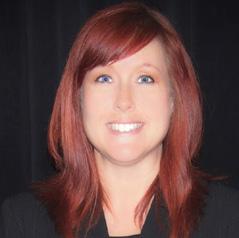
Kwamé Ryan
Music Director
Christopher Warren-Green
Conductor Laureate

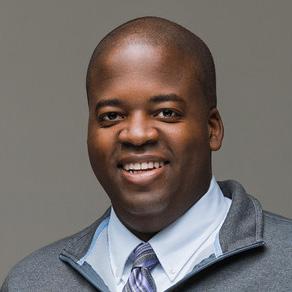
Katie Ebert
Youth Philharmonic Co-Conductor


Samuel Sparrow
Orchestra Committee Chair
Ben Geller
Artistic Committee Chair

Christopher James Lees
Resident Conductor & CSYO Principal Conductor
Eric Thompson
Youth Philharmonic Co-Conductor & Youth Ensemble Conductor
Ian Passmore
Interim Youth Symphony Conductor & Youth Camerata Conductor

Thomas Burge
ICSOM Delegate
The Charlotte Symphony Orchestra would like to thank the following Strategic Planning Committee members, comprised of administrative staff, board members, and musicians, for their extraordinary ideation, visionary thinking and time invested to make the creation of this Strategic Plan possible:
Debbie Abels
John Clapp
David Fisk
Kari Giles
Yih-Han Ma
Taylor Marino
Alex Miles
Glenn Mincey (Chair)
Kirsten Morris
Kim Parker
Deirdre Roddin
Cory Rogers
Bob Rydel
Melinda Snyder
Candace Sykes
Kevin Walker
Shanté Williams
We would also like to thank the many other CSO musicians, staff members, Directors, and Trustees who participated in numerous working groups to develop the Goals and Strategies included in this document.
Kwamé Ryan, Music Director
Christopher James Lees, Resident Conductor
Calin Ovidiu Lupanu, Concertmaster
The Catherine & Wilton Connor Chair
Joseph Meyer,* Associate Concertmaster
Kari Giles, Acting Associate Concertmaster
Dustin Wilkes-Kim, Acting Assistant Concertmaster
Susan Blumberg°°
Jane Hart Brendle
Cynthia Burton
Ayako Gamo
David Horak†
Lenora Leggatt
Jenny Topilow
Angela Watson†
Hanna Zhdan
Oliver Kot, Principal
The Wolfgang Roth Chair
Kathleen Jarrell, Assistant Principal
The Pepsi-Cola Foundation of Charlotte Chair
Carlos Tarazona°
Monica Boboc
Martha Geissler
Sakira Harley
Tatiana Karpova
Ellyn Stuart
Benjamin Geller, Principal
The Zoe Bunten Merrillt Principal Viola Chair
Kirsten Swanson†
Acting Assistant Principal
Matthew Darsey†
Ellen Ferdon
Wenlong Huang
Viara Stefanova
Ning Zhao
Christopher Warren-Green, Conductor Laureate
Jonathan Lewis, Principal
The Kate Whitner McKay Principal Cello Chair
Allison Drenkow,
Assistant Principal
Alan Black, Principal Emeritus
Marlene Ballena
Jeremy Lamb
Amy Sunyoung Lee
Sarah Markle
Jason McNeel, Acting Principal
Judson Baines, Assistant Principal
Justin Cheesman†
Jeffrey Ferdon
Andrea Mumm Trammell, Principal
The Dr. Billy Graham Chair
Victor Wang, Principal
The Blumenthal Foundation Chair
Amy Orsinger Whitehead
Erinn Frechette
PICCOLO
Erinn Frechette
Timothy Swanson, Principal
The Leo B. Driehuys Chair‡
Erica Cice
Jamison Hillian†
Terry Maskin*
ENGLISH HORN
Erica Cice
Taylor Marino, Principal
The Gary H. & Carolyn M. Bechtel Chair
Samuel Sparrow
Allan Rosenfeld
E ♭ CLARINET
Samuel Sparrow
BASS CLARINET
Allan Rosenfeld
AJ Neubert, Principal
Joshua Hood
Nicholas Ritter
CONTRABASSOON
Nicholas Ritter
Byron Johns, Principal
The Mr. & Mrs. William H. Van Every Chair
Andrew Fierova
Bradley Burford
The Robert E. Rydel, Jr. Third Horn Chair
Richard Goldfaden
Paige Quillen
Alex Wilborn, Principal
The Betty J. Livingstone Chair
Jonathan Kaplan*
Peter Stammer†
Gabriel Slesinger, Associate Principal
The Marcus T. Hickman Chair
John Bartlett, Principal
Thomas Burge
Scott Hartman, Principal
Colin Benton, Principal
The Governor James G. Martin Chair
Jacob Lipham, Principal
The Robert Haywood Morrison Chair
Brice Burton, Principal
This roster lists the full-time members of the Charlotte Symphony. The number and seating of musicians on stage varies depending on the piece being performed.
The Charlotte Symphony Orchestra is a proud member of the League of American Orchestras.
° Non-revolving position
°° Alternates between first and second violins
† Acting member of the Charlotte Symphony
‡ Funded by The Symphony Guild of Charlotte, Inc.
* On leave
Richard Krumdieck, Chair
Ulrike Miles, Vice Chair
Melinda Snyder, Vice Chair
Linda McFarland Farthing
Immediate Past Chair
Kevin Walker, Treasurer
David Fisk
President & CEO
Kwamé Ryan
Music Director
Mick Ankrom
Joye D. Blount
Mike Butterworth
Nick Clements
Richard Osborne, Chair
Paul Anderson
Ruth & Richard Ault
Kat Belk
Arlene & Milton Berkman
Jason & Tiffany Bernd
Andrea & Alexander Bierce
Mary & Charles Bowman
Frank Bragg
Robin & Bill Branstrom
Dr. William Charles & Dr.
Cynthia Nortey
Derick & Sallie Close
Robin Cochran
EXECUTIVE
David J. L. Fisk, President & CEO
Samantha Hackett, Executive Administrator
ARTISTIC OPERATIONS
Scott Freck, Vice President for Artistic Operations & General Manager
Carrie Graham, Senior Director of Artistic Planning
Tim Pappas, Director of Operations
Bart Dunn, Principal Music Librarian
Nixon Bustos, Senior Music Librarian
Emily Schaub, Assistant Music Librarian
Erin Eady, Senior Manager of Orchestra Personnel
Claire Beiter, Artistic Operations Manager
John Jarrell, Stage Manager
Wilton Connor
Jeanie & T. Thomas Cottingham III
Brian Cromwell
Susan Cybulski
Alessandra & Pasquale De Martino
Alvaro & Donna de Molina
Peggy & Richard Dreher
Lisa Hudson Evans
Karen Fox
Eileen Friars & Scott Pyle
Todd Gorelick
Ralph S. Grier
Mary Delk*
Denise DeMaio
Sidney Fletcher
Kevin Gottehrer
Lucia Zapata Griffith
Byron Johns*
Valerie Kinloch
Stephen Makris
Laurie Guy
Janet Haack
Reginald B. Henderson, Esq.
Mark & Whitney Jerrell
Jeff Lee
Gov. James G. Martin
Jane & Hugh McColl
Susan & Loy McKeithen
George McLendon
Elizabeth & Jay Monge
Mica Oberkfell
Patrick J. O’Leary
Debbie & G. Patrick Phillips
Paul Reichs
Shayne Doty, Vice President of Development
Mandy Vollrath, Director of Corporate & Institutional Relations
Libby Currier, Director of Individual Giving
Tammy Matula, Senior Manager of Development Operations
Jennifer Gherardi, Development ManagerCampaign & Special Events
Megan Woolbright, Annual Fund Manager
Noel Kiss, Advancement Associate
Josh Bottoms, Institutional Giving Coordinator
FINANCE & ADMINISTRATION
Christian Drake, Vice President of Finance & Administration
Chazin & Company, Financial Services
Amy Hine, HR Coordinator & Office Administrator
Channing Williams, Accounting Associate
Maribeth Baker, Human Resources Counselor
Aram Kim Bryan, Vice President of Learning & Community Engagement
Dylan Lloyd, Senior Manager of Youth Orchestras
Mark Rockwood, Education & Community Programs Manager
Michaela Sciacca, Project Harmony Manager
Gavin Fulker, Education & Community Programs Assistant
Alex McKinnon
Sara Garces Roselli
Ylida Scott
Jennifer Sullivan
Brienne Tinder*
Andrea Mumm Trammell*
Ken Walker
*ex-officio
Nancy & Charles Robson
Patricia A. Rodgers
M.A. Rogers
Lindsay & Frank Schall
Laura & Mike Schulte
Carolyn Shaw
Emily & Zach Smith
Bob & Marsha Stickler
Kelly & Neal Taub
Adam Taylor
Braxton Winston
Richard Worf
Joan Zimmerman
Albert Zue
Lily Moore, Youth Orchestras Assistant
Bria Alexander, Learning & Community Engagement Assistant
Frank Impelluso, Vice President of Marketing & Audience Development
Deirdre Roddin, Director of Institutional Marketing & Communications
Nicole Glaza, Senior Manager of Digital Marketing
Laura Thomas, Senior Manager of Marketing & Audience Development
Chad Calvert, Visual Communications Manager
Meghan Starr, Patron Experience Manager
Garrett Whiffen, Ticketing Manager
The Charlotte Symphony Orchestra recognizes our state and local governments, corporations, foundations, and countless individuals for their support and generosity. Each plays a vital role in ensuring the continued success of the CSO. Thank you.
